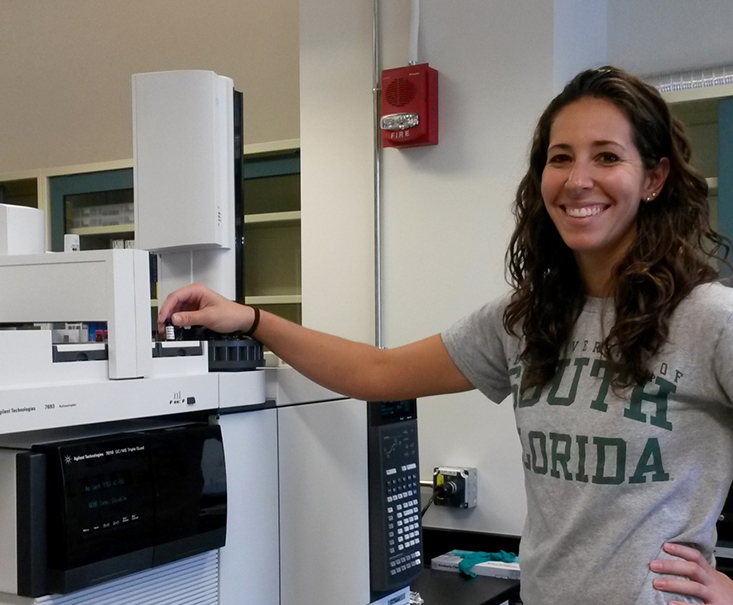Written by Sean Beckwith, PhD student
NEW ORLEANS, LA – As a follow-up, or perhaps side story, to the information that I presented from Dr. Isabel Romero’s talk on Wednesday at the GoMOSES conference, the story of the Golden Tilefish adds some depth to the topic of maternal transfer of polycyclic aromatic hydrocarbons (PAHs) to fish eggs.
Ph.D. candidate Susan Snyder (USF CMS/C-IMAGE), who presented a poster at the conference, generated some interesting data that suggest PAHs are not transferred to the eggs of Golden Tilefish in significantly high quantities. By comparison, PAHs bioaccumulated to a greater extent in the liver of Tilefish; however, in general, there was no correlation between lipid content and PAHs as was seen for other species of fish in the Gulf.
So, as Snyder describes, the story inevitably broadens a bit as it seems that the maternal transfer of PAHs may be species specific. However, this is a preliminary assessment and no conclusion should yet be made about Tilefish. Neither Romero’s study nor Snyder’s study was purposefully designed to study maternal offload and transfer; the discoveries actually came more as opportunistic studies from samples gathered for other purposes. In the case of the Tilefish, it may be that the fish were sampled too late in their spawning season to capture the data needed to draw conclusions.
More work is needed, and, based on some presentations from this year’s GoMOSES conference, it seems clear that the question of maternal transfer of PAHs should be addressed in future studies.
